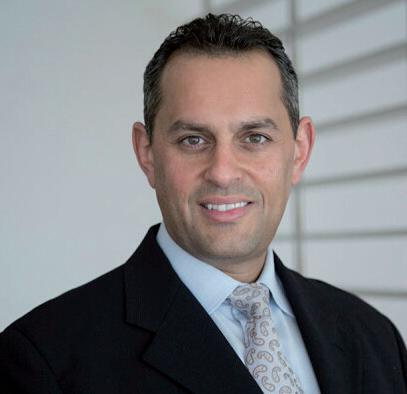
2 minute read
TRAUMATIC BRAIN INJURY EXPERT
by TBI Times
One tool that neurosurgeons, Dr. Mobin included, use to do this is the Glasgow Coma Scale (GCS). The GCS is used to help gauge the severity of an acute brain injury and is broken down into three categories — eye opening, verbal response, and motor response — and then again into numerical scores, zero (not testable) through six — each of which is assigned a physical or cognitive task. A patient’s ability or inability to perform these tasks earns them a particular score. The scores are then compiled to determine if the severity of patient’s potential brain injury.
“As a neurosurgeon, the GCS has been part of my training from the beginning,” says Dr. Mobin. “It’s a wonderful tool for acute analysis, triage, and treatment.”
Advertisement
While the GCS is the go-to method in the triage stage of determining whether or not a patient has sustained a brain injury, it is rather a crude scale to forecast the long-term effects of the brain injury. “This is where we get into a more detailed analysis of the injury,” says Dr. Mobin. “Structural imaging is the next step.” Structural imaging techniques include angiography, CT, Doppler and MRI, however, in the case of a TBI, MRIs may not be an initial option due to the potential instability of the patient.
“Intracranial hemorrhage is something we look for in the acute setting which is well detected by CT scanning,” says Dr. Mobin. “If this is identified, patients will undergo serial neurological examinations and as indicated serial CT scans to monitor patients at regular intervals and to detect the ‘blossoming’ of contusions — when a contusion becomes progressively larger,” says Dr. Mobin.
After the triage phase and initial diagnosis, brain injury patients may receive follow-up magnetic resonance imaging (MRI) and/or computed tomography (CT) testing for physicians to assess the progression of the brain injury. This typically happens within the first few months after diagnosis.
Dr. Fardad Mobin, M.D. is a highly skilled, board-certified neurosurgeon. He has performed over 3,000 cranial and spinal surgeries and is recognized for his exceptional operative skills as well as his excellent patient care. Dr. Mobin is a graduate of the Rensselaer Polytechnic Institute in Troy, New York, holds a medical degree from the University of California Davis School of Medicine, and has completed a prestigious cerebrovascular fellowship at the University of California, Los Angeles. In addition to running his practice, Mobin Neurosurgery, Dr. Mobin serves as an expert medical witness, utilizing his extensive knowledge of neurosurgery to aid victims of trauma in getting the care they need.
Neurosurgery is surgery of the nervous system. It is the medical specialty concerned with the diagnosis and treatment of patients with injury to, or diseases/disorders of the brain, spinal cord and spinal column, and the peripheral nerves throughout the body.
As a neurosurgery expert, Dr. Mobin’s task is to illustrate the distinction between the different classifications of TBI and explain how TBI is diagnosed and it’s impact on the brain function.
At and beyond six-month post-injury, more detailed imaging, such as volumetric analysis and diffusion tensor imaging (DTI) tractography, is employed. DTI tractography is an MRI technique that measures the rate of water diffusion between brain cells and can help clinicians determine if there is any axonal shearing — tearing of the brain’s long connecting nerve fibers (axons) caused by the brain shuttering and rotating inside of the skull.
“The six-month mark is significant. Symptoms will either have disappeared or will continue to worsen,” says Dr. Mobin. “Patients who are still experiencing cognitive or psychological disturbances at this point are typically diagnosed with a mild to moderate traumatic brain injury. Individuals diagnosed with mild traumatic brain injury (mTBI) often fall through the cracks because many clinicians are hesitant to treat these patients due to the assumption that mTBI symptoms should subside within six months, and this isn’t always the case.”
“The brain is the most complex structure known to man and neuroscience is ever evolving,” says Dr. Mobin. “Although we [physicians] have many sophisticated tools at our disposal, we still don’t have all the answers. My job is to design solutions drawing on these tools that will best help each individual patient.”
For more information about Mobin Neurosurgery visit them online at www.spinesurgeonla.com or call 310-829-5888.






